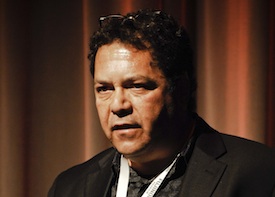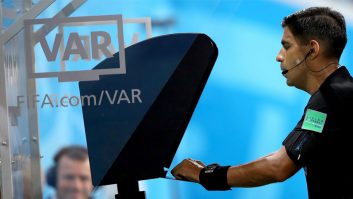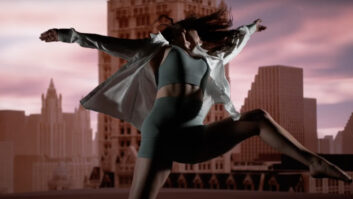
Arguably the current wave of 3D TV production would not have got off the ground had Steve Schklair, along with Vince Pace, not pioneered technology that minimises stereo errors at the point of capture. Understandably, he had a lot to say on the subject.
The Pace 3D camera rigs have been famously adopted by director James Cameron for Avatar, while 3Ality Digital technology has become ubiquitous among broadcasters and sports franchises in the US and UK for acquiring live action in 3D. BSkyB for example specified the use of 3Ality systems in the design of Europe’s first dedicated 3D outside broadcast vehicle for coverage of Sky Sports in 3D.
In an inspiring presentation the 3Ality CEO announced that he believed the major technology hurdles to have been met but that there were not enough trained people to use the kit properly. “One of the biggest challenges is training the crew,” he said. “Human capital is the resource in shortest supply.”
Aside from technical crew the education of broadcast and commissioning executives is important, he said. “Since stereo requires money and executives have the chequebooks we all need to play our part in educating the client about what works and what does not. Shooting 3D isn’t that difficult if you are already well versed in TV production.”
By any reckoning 3Ality Digital makes, Pace aside, the best and most expensive 3D rig systems on the planet but the tide may be turning as manufacturers, notably Sony, begin to mass market more economical automated processing tools which take much of the legwork of lens alignment away from motorised rigs.
Schklair also commented on the new Panasonic twin-lens single body camcorder, agreeing that the industry needed to develop lightweight and portable camcorders but arguing that the first generation of such systems had considerable limitations.
“The problem is that it has a fixed interaxial. You cannot shoot close-ups with those cameras because the lenses can’t be brought close enough together. In addition the use of quarter or third inch chip sensors won’t intercut well with professional broadcast equipment.”
Admitting to his own “religious and narrow point of view”, Schklair declared that the only technology capable of broadcasting live was a fully motorised one. You need the right technology that will keep alignment and depth consistent so you can go to air with confidence that you can make 3D work comfortably for the viewer,” he said.
“The number one cause of eye strain is inconsistency with the depth. Most 3D rules should be broken – but consistency with depth or transitioning between depth is not one of them. With recorded content you can correct this in post – it’s expensive and not ideal but it can be done. But with live you don’t know what camera is going to be cut to so the only answer is consistency.”
He urged the adoption of an industry-wide quality standard which he described as an agreed threshold of parallax beyond which the eyes would be forced into too great a divergence.
“Some shots in live 3D should never be allowed to air. We need a tool to measure this and to automatically switch to a 2D shot if the threshold is breached, for example if a fan passes their hand unexpectedly in front of the camera.”
Naturally 3Ality has such a solution up its sleeve. It is also working on software that will automate the placement of graphics in a live broadcast. This is rapidly moving to the top of the agenda both in terms of subtitling and on-screen graphic furniture but also means making a graceful transition between 3D content and 3D or 2D stings and idents, EPGs or commercial breaks.
3Ality is equally busy enhancing its Stereo Image Processor (the software that controls its rig), with the goal of replacing manual convergence pulling.
“Every 3D camera system requires someone to control the interaxial and convergence parameters and we have heard resoundingly from broadcasters that this has to go away,” Schklair said. “They don’t want ten extra people on the crew to feed and house. 3Ality is working on systems to automate the process by slaving the cameras together to achieve consistent depth. This is a measurement issue more than one of human judgement that remains the responsibility of the stereographer. Their critical role in setting the depth budget and overseeing the 3D will not go away.”
He was unequivocal that the need to provide both a 2D and a 3D crew for live sporting events (as per the World Cup) is uneconomic in the long run. “That has to go. There has to be a common set of production values and editorial approach between 2D and 3D productions. Everything I have ever seen in 3D would work just fine in 2D but the same cannot be said of the reverse.”
– Adrian Pennington






